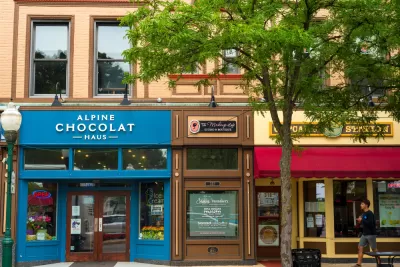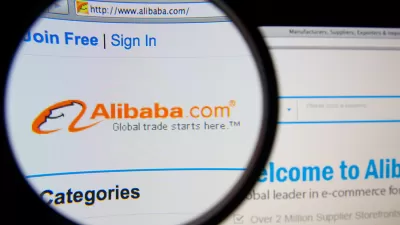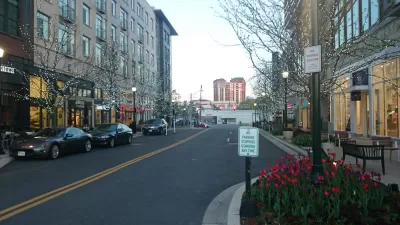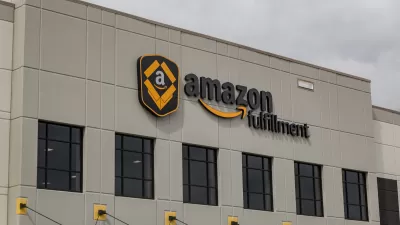Stores are an integral part of the cityscape. So how will online shopping change what we see in the coming years?

Courtney Humphries considers ways cities will change as e-commerce and related delivery systems continue to evolve. She starts by taking a look back as how cities got to this point—from department stores in downtowns to suburban strip malls and then large, enclosed malls and big-box retail.
Shopping became separated by zoning and the need for shoppers to access store location by car. "Mixed-use developments can be seen as an attempt to suture earlier tears in the urban fabric left by 20th-century planning. Meanwhile, investment and affluent residents have returned to urban centers, and many of the showpiece malls in suburbs are struggling," says Humphries.
Today online shopping seems both ubiquitous and commonplace, even though, as Humphries points out, online purchases make up less than 10 percent of retail transactions. Still, physical stores are getting smaller and the demand for warehouse space continues to increase.
In addition, brick-and-mortar stores have felt the pressure to deliver something more in the realm of an experience, which extends from the store into the downtown and surrounding areas. "[Robert] Gibbs says that small retail stores can’t just offer standard goods you could easily get delivered; they need to offer something local, fresh, or luxurious, with excellent customer service. What’s outside the store is also important," reports Humphries.
As for what the future holds in store, futurists are predicting everything from residential buildings designed with storage spaces specifically for deliveries to stores that function largely as warehouses. A crop of empty storefront spaces could also provide a wealth of opportunities for new and innovative uses—or not.
"Inequalities in the retail landscape could also worsen, with lower-income neighborhoods getting more shuttered storefronts and dollar stores, and higher-income areas getting beautiful landscaping and cultivated 'experiences,'" says Humphries.
FULL STORY: How Amazon Prime will change the way our cities look

Montreal Mall to Become 6,000 Housing Units
Place Versailles will be transformed into a mixed-use complex over the next 25 years.

Planetizen Federal Action Tracker
A weekly monitor of how Trump’s orders and actions are impacting planners and planning in America.

Four Reasons Urban Planners Can’t Ignore AI
It’s no longer a question of whether AI will shape planning, but how. That how is up to us.

Bend, Deschutes County Move to Restrict Major Homeless Encampment
City and county officials are closing off portions of an area known as Juniper Ridge where many unhoused residents find shelter, hoping to direct people to housing and supportive services.

High Housing Costs Driving Down Transit Ridership in LA
When neighborhoods gentrify and displace lower-income residents, transit ridership suffers, new research shows.

Iowa Legalizes Accessory Dwelling Units
A new law will allow property owners to build ADUs on single-family lots starting on July 1.
Urban Design for Planners 1: Software Tools
This six-course series explores essential urban design concepts using open source software and equips planners with the tools they need to participate fully in the urban design process.
Planning for Universal Design
Learn the tools for implementing Universal Design in planning regulations.
City of Camden Redevelopment Agency
City of Astoria
Transportation Research & Education Center (TREC) at Portland State University
City of Camden Redevelopment Agency
Municipality of Princeton (NJ)
Regional Transportation Commission of Southern Nevada





























